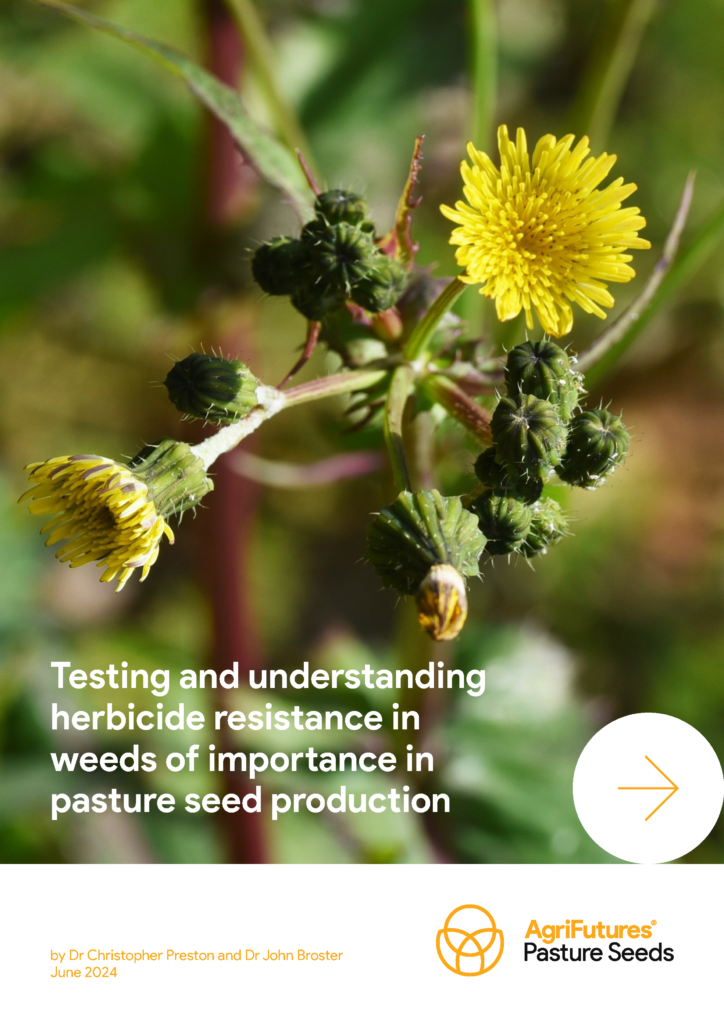Given its status as a high-value crop, clover seed production fields are actively managed using intensive herbicide pressure to control the emergence of weeds, such as annual ryegrass, common sowthistle and capeweed. As there are few herbicide modes of action available to growers, there is a high risk of herbicide resistance in clover seed.
To date, however, there have been no surveys of herbicide-resistant weeds in clover seed production fields, so there is limited information about the extent of the problem to aid management interventions. Within this context, this project sought to understand current herbicide resistance through collecting weeds from clover seed production fields in South Australia, New South Wales and Victoria.
The study showed herbicide resistance is present in common weeds of clover seed production, particularly in the south-east of South Australia. Specifically, the findings confirmed resistance in annual ryegrass to Group 1 herbicides, and in common sowthistle and capeweed to Group 4 herbicides.
As chemical control of weeds is likely to become more controlled, with a view to managing resistance and maintaining internation market access, there is a need to identify new herbicides and alternative weed control practices to reduce the pressure on herbicides in this industry. Growers are advised to change current weed control practices to provide better weed control and slow further resistance. This includes using alternative herbicides where available and planting rotational crops to reduce weed burdens, so clover can be sown into clean fields.





